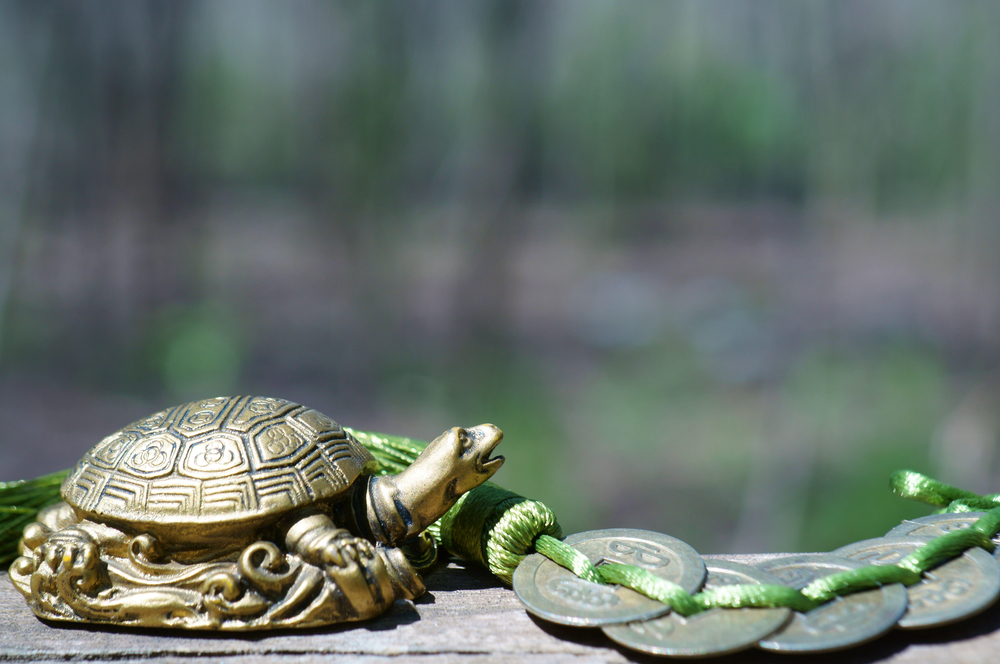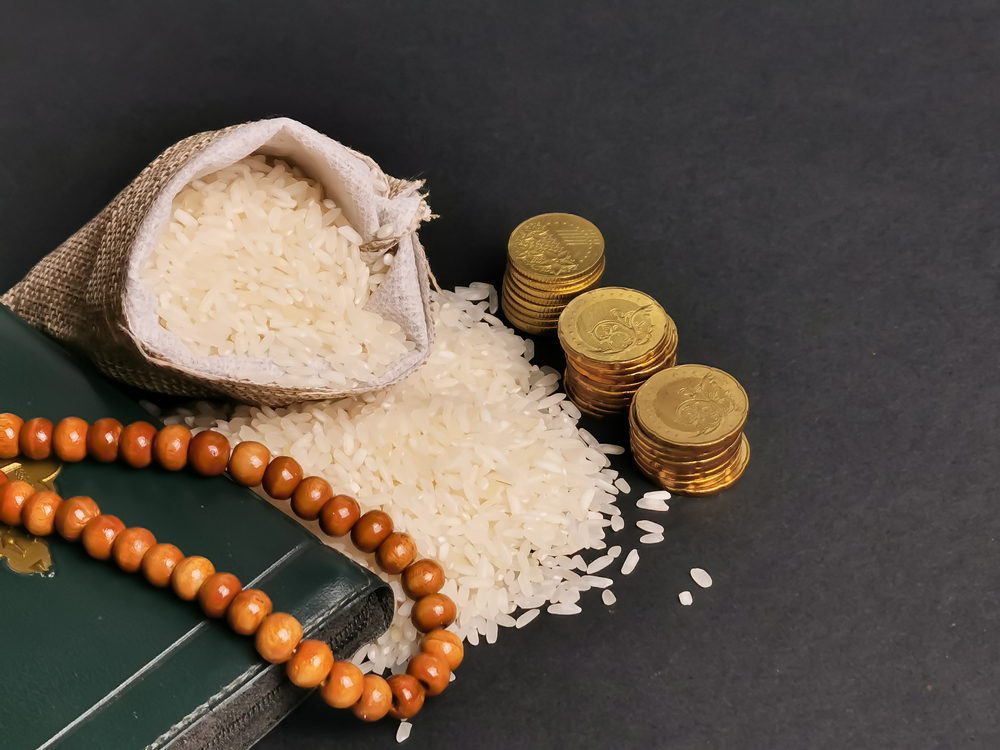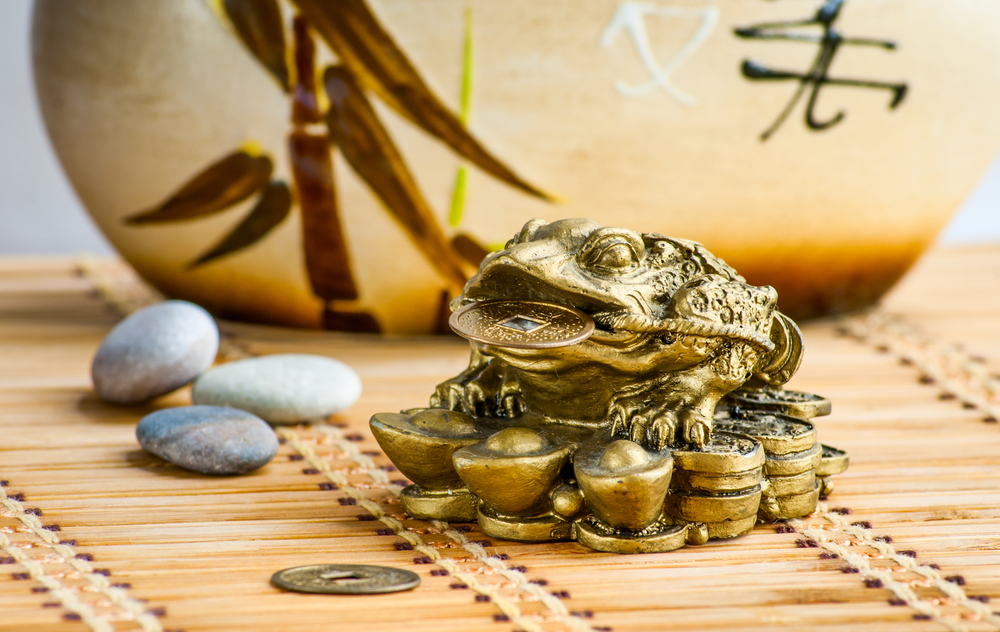Money may not grow on trees, but people around the world have devised an array of rituals they claim can cultivate financial prosperity. While some of these practices might seem unusual at first glance, their persistence in various cultures suggests a deeper resonance with the human psyche. Whether you’re a skeptic or a believer, exploring these rituals offers insight into how people attempt to influence luck and abundance. Here’s a peek into some of the more intriguing money rituals that people swear by. You might just find a practice that piques your curiosity—or even your wallet.
1. Placing Cinnamon on the Doorstep

Sprinkling cinnamon powder on your doorstep is a practice some believe can bring prosperity into your home. The ritual is simple: on the first day of the month, you blow cinnamon across the threshold with the intention of inviting wealth. This practice is rooted in the idea that cinnamon itself is a symbol of abundance and good fortune. Aromatherapist Erica Galvin notes, “Cinnamon’s warm, inviting scent is thought to energetically open doors to opportunities.” It’s a ritual that requires little more than belief and a pantry staple, costing nothing yet promising much.
This practice is as much about intention as it is about action. People often pair the ritual with a mantra or personal affirmation to reinforce their desires. The act of setting an intention with each sprinkle creates a mindful moment in the hectic rush of everyday life. In an age where mindfulness is praised for its benefits, this ritual serves a dual purpose. You’re not just aiming to attract money; you’re also carving out space for reflection and positivity.
2. The Feng Shui Money Corner

Feng Shui, the ancient Chinese practice of harmonizing the environment, has a specific area dedicated to wealth. This ‘money corner’ is located in the southeast area of your home or room. Adherents believe that by enhancing this space with elements like plants, crystals, or fountains, one can attract abundance. The theory rests on the idea that energetic flow can be manipulated to create specific outcomes in life. This practice requires a bit more than just belief; it calls for rearranging your personal space to align with these principles.
People often find that the act of setting up their money corner is itself a form of meditation. It requires you to undertake an assessment of your space, encouraging decluttering and simplification. This process can lead to mental clarity, which some argue is the first step to any form of success, financial or otherwise. Furthermore, the act of nurturing a plant or maintaining a water feature brings a level of responsibility and care, which are key traits for building wealth. Thus, this ritual is multi-faceted in its approach to prosperity.
3. The Full Moon Abundance Check

Writing a check to yourself during a full moon is a ritual some people claim can manifest money into their lives. The practice is straightforward: you write your name in the payee field, leave the amount blank or write “paid in full,” and sign it as “The Universe.” This is done with the full moon as it’s traditionally a time associated with completion and manifestation. According to astrologer Lucy Ingram, “The full moon is considered a powerful time for setting intentions, as its energy is thought to heighten our focus and desires.” The check is then kept in a safe place until the next full moon, when the process is repeated.
This ritual taps into both symbolism and the power of positive thinking. The act of writing a check represents a tangible commitment to your financial goals. By regularly performing this ritual, you create a habit of focusing on abundance rather than scarcity. Over time, this shift in mindset can influence both your actions and attitude toward money. While it’s not a quick fix, many participants report feeling more aligned with their financial objectives.
4. Rice and Coins Ritual

In some cultures, rice and coins are symbols of wealth and prosperity and combining them in a ritual is thought to double the effect. The practice involves filling a jar with rice and coins and placing it in a strategic location, such as a kitchen or entryway. The jar serves as a visual reminder of abundance, with the rice symbolizing sustenance and the coins representing tangible wealth. This ritual encourages a form of ongoing engagement, reminding people to appreciate and add to their resources continually. Acknowledging the rice-and-coins jar can be a daily practice that boosts gratitude and financial mindfulness.
This ritual is based on the idea that what you focus on expands. By regularly seeing and interacting with the jar, you create a consistent reminder of prosperity. It’s a simple yet powerful way to integrate your financial goals into your daily routine. Many believe this ongoing engagement helps align your subconscious mind with abundance, facilitating a more prosperous outlook on life. While its effectiveness is subjective, the rice and coins ritual serves as a constant invitation to welcome wealth.
5. The Filipino Tradition of Jumping at Midnight

At the stroke of midnight on New Year’s Eve, some Filipinos jump to ensure growth in the coming year. This tradition is rooted in the hope that jumping when the clock strikes twelve will help you grow taller and, by extension, more prosperous. Cultural anthropologist Liza Morales has mentioned, “It’s a symbolic act reminding participants to aim high and reach for new levels of success.” The act is simple yet filled with hope and joy, setting a positive tone for the coming year. While height may remain untouched, many believe that the positivity and intention behind the leap can indeed foster prosperity.
Participating in this ritual is as much about community and celebration as it is about personal growth. It’s often done in a group setting, with family and friends joining in the joyous jumps. This shared experience fosters a collective sense of potential and new beginnings. The laughter and excitement of the moment create a memorable start to the year, infusing it with optimism. The tradition is a reminder that sometimes, aiming for the sky can be the first step in achieving your dreams.
6. The Lucky Frog in Feng Shui

In Feng Shui, the three-legged frog with a coin in its mouth is a classic symbol meant to attract wealth. Placing this frog in a strategic location, usually facing inward near the entrance, is thought to invite wealth into the home. This ritual is grounded in Chinese mythology, where the frog is a creature associated with prosperity. It’s common for people to place a three-legged frog on a small table or shelf, ensuring it’s at a high vantage point. The frog should face inward to symbolically pull wealth into the home rather than away from it.
The ritual doesn’t end at placement; it extends to care and maintenance. People are encouraged to periodically clean the frog and even talk to it, reinforcing their financial intentions. This engagement creates an ongoing relationship with the symbol, keeping prosperity at the forefront of the mind. Some also add other wealth symbols, like coins or crystals, to amplify the effect. It’s a layered approach to attracting wealth that combines physical action with mental intention.
7. The Scottish First-Footing Tradition

In Scotland, the first person to enter a home after midnight on New Year’s Day is believed to bring good fortune for the year ahead. Known as “first-footing,” this visitor traditionally brings gifts such as coal, shortbread, or whiskey to ensure prosperity. According to Scottish historian Dr. Fiona Watson, “This tradition is deeply rooted in the belief that the first person to cross the threshold sets the tone for the year.” The first-footer should ideally be a dark-haired male, symbolizing luck and protection. While these specifics may vary, the underlying principle remains: the arrival of abundance.
First-footing is not just about who arrives first, but about the elements they bring with them. Coal symbolizes warmth and sustenance, while shortbread and whiskey represent celebration and abundance. This ritual is a collective celebration, where the community comes together to share their hopes for the coming year. It reminds people of the importance of camaraderie and shared intentions in creating prosperity. As midnight passes, homes filled with laughter and good wishes set a positive tone for the year to come.
8. Counting Money on New Year’s Day

Some people count money on New Year’s Day to bring wealth and financial luck throughout the year. This simple yet powerful ritual involves sitting down with all your cash and counting it, acknowledging each bill and coin. The idea is to start the year by physically engaging with money, solidifying a mindset of abundance. While counting, participants often focus on gratitude for what they already have and visualize more flowing into their lives. This combination of gratitude and visualization is thought to set a powerful precedent for the year ahead.
The act of counting money is also a grounding experience that connects you to the tangible aspect of wealth. It’s about acknowledging the money you have while simultaneously cultivating a sense of anticipation for future earnings. By starting the year recognizing and valuing your assets, you create an atmosphere of financial mindfulness. This ritual can be a powerful motivator, encouraging you to align your actions with your financial goals. Moreover, it’s a practice that helps reinforce the belief that more is possible.
9. The Burning Bay Leaf Ritual

Burning a bay leaf is a ritual believed by some to attract prosperity and success. The process involves writing a financial goal or amount on a bay leaf, then burning it while focusing on your intention. Bay leaves have been used in various cultures for their supposed protective and purifying qualities. As the leaf burns, adherents visualize their financial desires being released into the universe. The ritual’s simplicity is part of its appeal, requiring minimal resources while promising transformative results.
This ritual combines the physical element of fire with the symbolic act of release. Writing down a goal makes it explicit, and the act of burning signifies letting go of doubts and fears. The scent of the bay leaf adds an aromatic layer to the practice, engaging the senses and reinforcing focus. By repeating this ritual, people aim to cultivate a mindset of abundance and possibility. While outcomes may vary, the consistent practice of setting and releasing goals can foster a positive relationship with money.
10. The Japanese Kakeibo Method

Kakeibo, a traditional Japanese budgeting system, is not just a tool but a ritual for financial mindfulness. The practice involves keeping a dedicated notebook where you manually track income, expenses, and savings. Unlike digital apps, kakeibo emphasizes the tactile experience of writing and reflecting on your finances. Journalist Fumiko Chiba, an advocate of kakeibo, highlights, “This method invites you to question if each purchase aligns with your values and goals.” The ritual of maintaining this journal promotes a deeper understanding of your financial habits and aspirations.
Engaging with kakeibo on a regular basis transforms budgeting from a chore into a meaningful activity. The process encourages introspection, prompting you to consider not just how much you spend, but why you spend it. This level of awareness can lead to more intentional living and a stronger sense of control over your financial future. By creating a space for reflection, kakeibo helps people make more informed decisions about their money. Over time, this practice can significantly alter your financial landscape, empowering you to achieve your goals.
This article is for informational purposes only and should not be construed as financial advice. Consult a financial professional before making investment or other financial decisions. The author and publisher make no warranties of any kind.








